 |
 |
 |
|
|
 |
THE TECHNIQUE OF COLOURING MATTER
Colour is a paradox. We do not live in the cacophonic colour world we think we live in. The world consists of shapes and forms in various sizes, and light that falls on those surfaces is absorbed in different wavelengths and/or reflected back, after which the human eye through our brains gives the impression of seeing colours. When all wavelengths of the white, natural light are reflected, we see the colour white, while if all wavelengths are absorbed, then we see the colour black. If for example all wavelengths are absorbed except the green, we see the colour green.
|

|
Posted 12 March 2015
|
Share this:
|
|
Colour is a term for the composition of electromagnetic radiation that is visible to the human eye in terms of series of wavelengths and their relative strength.
Depending on the texture of the material (English: top tone), transparency (under tone) or density of the material (mass tone), time, place and circumstances also give the light effects such as break, scatter, interference, spread and mix and together with the reflected and absorbed light, these effects provide thousands of colour variations in different colour tones: the purest colours of the colour wheel, colour values: the ratio of the pure colour compared to the white, black or grey in the mixing colours and grayscale: the degree of lightness or darkness of the colour.
|
|
|
|
|
|
|
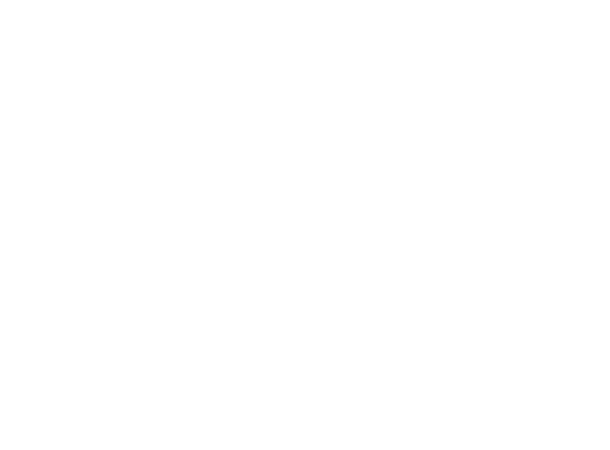
Jaap Drupsteen: Panel Crealite, 2004; Institute Vision & Sound, Hilversum, NL
SGG CREA-LITE, SasGlas, Saint-Gobain Glass
|
|
|
|
|

|

|

|
Colours can be mixed, and there are several systems such as for the mixing of light or additive colour synthesis (colour TV screen and transparent materials), mixing pigments or subtractive colour (painting with gouache or opaque glass paint) and the partitive mixing or optical view (tissues, millefiori and mosaic glass and glass mosaic, pointillism and four-colour printing).
From their earliest existence humans have used colour resources (German: Färbmitteln, English: colorants) to communicate and distinguish themselves, to conform or confront with the others. Body painting, the coloured feathers of a headdress, a hand print on the wall of a cave and the rhythmic decoration on a cooking pot speak a clear language. The use of colour resources developed from simple actions with natural colour agents such as the white powder with lime, blowing coloured earth by a blow-tube, spattering, daubing and stamping of a mixture of soot and oil or fish oil to the most sophisticated chemical processes and techniques we now use in the manufacture of the synthetic colorants for our makeup, clothing, artefacts, nutrition, housing, consumer goods and attributes.
In 1400 Venice was the largest supplier of pigments or 'dry colour' and prepared colour pigments as paints and inks in the form of 'wet colour '. The pigment masters obtained their supplies of raw materials from, for example, Budakshan (now lies in Afghanistan) and called the blue that was made of Lapis Lazuli, a gemstone, "Ultramarine” (from across the sea). German, Prussian or Berlin blue came from Northern and Central Europe, while Venetian blue was manufactured from regional metal oxides and Smalt. Asch was the unpurified kind as in Haarlem Asch. At the Guild of painters the pigment and dye traders were often connected as members.
|
|
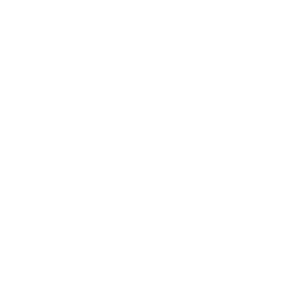
Jan Fabre
Tafel voor de Ridders van de Wanhoop
1987-2007
Gesmolten glas met blauw glas, gebrandschilderd met kobaltkleurige email met handafdrukken
400 x 100 cm
Photo: Fenestra Ateliers
|
|
|
|
|

|

|

|
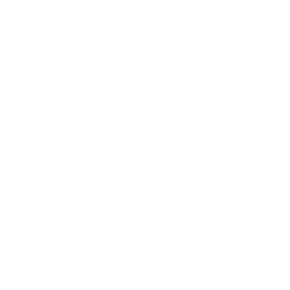
© Raimond Spekking / CC BY-SA 4.0 (via Wikimedia Commons)
Hämatit faserig, auch Blutstein, Eisenglanz, Specularit, Iserin, Roteisenstein, Roteisenerz oder Rötel genannt. Fundort: Irrgang (Bludná), böhmisches Errgebirge. Ausgestellt im Mineralogischen Museum Bonn.
|
|
Colorants are divided into dyes, pigments and assemblies of metals, metal oxides and minerals and are the collective name for colouring substances and to be classified as for example by:
Material: cellulose colorants for paper, cellulose, wood and cotton; protein colorants for wool, hair and skin and glass colorants for all originating techniques, glass processing and glass working techniques.
Technique: as for example screen print paint and stained glass paint.
Origin: natural, mineral and synthetic colorants. In the past, the colour resources were classified by the 'dead' or inorganic nature and the 'living' or organic nature. Organic chemistry originated in the 18th century when the natural colour resources could be analyzed and it was discovered that these consisted mainly of carbon and hydrogen. Synthetic dyes were then made from derivatives that were released at the distillation of carbon fabrics and were called for example Aniline and Mauve (French for light purple) or Maluwe (old-Dutch), which was invented by William Henry Perkin in 1852 during his search for synthetic quinine. At the time, all chemically manufactured compounds were counted as organic, and the inorganic compounds were those of mineral origin. Modern synthetic colorants are now called all organic, while and inorganic substances are substances without carbon compounds. Natural colorants come from plants such as trees, mosses, berries, roots, bark, peel/skin, nuts or flowers, etc. and carry names such as indigo, archil, brazil wood, saffron, henna and madder; animal dyes are extracted from parts of animals such as shields, shells and secretion for manufacturing carmine or kermes, cochineal, purple and sepia; for example, mineral dyes are extracted from stone, earth, clay and oxides such as lapis lazuli, hemaliet, umber, etc. Natural earth colours are mined all over the world such as raw or burnt siennas, umbers, green earth and red iron oxides or Rötel.
|
|
|
|
|
|
|
Chromaticity: for example, the blue smalt, azure or sapphire (USA: zaffer, English: saffloride or safflower) a cobalt glass that was obtained by annealing or roasting, calcination and firing of silver ores. Fusing this glass residue with quartz and alkali made the smalt that produced the blue pigment after pulverization. Note: until the 18th century all azure-blue colours were called Smalt.
Sapphire glass with a sky blue colour that stands as 'the colour of the light' in front of the Ultramarine blue 'came to be the colour of the night’, and was manufactured as early as 1100: the Franconian glass painters had no other way of producing blue coloured glass, and fused old, opaque blue Roman glass shards (Latin: vascula) and glass mosaic with colourless glass (Latin: clari et albi) to obtain their transparent light blue sheets (Latin: saphiri clari). At most this produced a sheet of 30 x 30 cm. The colour types have beautiful names such as Armenian bolus, Bone black, Caput Mortum or Dode Kop, Cinnabar or Vermilion, Dragon’s blood, Mummy and Sinople.
Heraldry: colour is essential in heraldry and the main colours in the shield, helmet signs and shrouds were always interspersed with one of the two metals: Gold appears as yellow and silver as white. The main colours are: red: Keel (of L: gula, a gaping mouth), blue or azure, sable for black or green or Sinople (to avoid confusion with the French word for green vert that looked too much like vair). Tertiary colours such as purple, orange, brown and incarnadine, flesh tones of pink are used only if the coat of arms carries natural colours. ‘Vaar’ or fur linings as ermine and squirrel -mistranslated in the fairy tale Cinderella and the glass slipper where vair was mistranslated as verre or glass- are schematically shown in black and white patterns. In uncoloured images the colour is indicated by astronomical marks or hatchings and cross hatchings. NB: Sinopia, Sinope, Sinoper, Sinopis and Sinople (from the city Sinope in Asia minor) remained until 1500 in the literature and poetry as concepts for the colour red made from locally mined iron oxide pigments which also often were used in the underpainting of frescoes.
Imagery: for centuries metaphors have been one of the most widely used forms of communication. By means of words images are evoked. Colour names that arose by association are for example tomato red, sky blue, snow white, pitch black, gray mass, etc.
Colours have many aspects such as taste and odour associations in food, household and personal care products and their packaging; functional values (like red for hot and fire for danger or a white doctor's coat for clean); upgrading (as for example the blue of bottles for mineral water, by luxury the rose of a bubble bath or the butter yellow colour addition to the grey margarine-mass); the signage in traffic, or the liturgy, and symbolic value (as the blue for the mantle of the Holy Mother Mary and green for hope and gratitude).
|
|

|

|

|
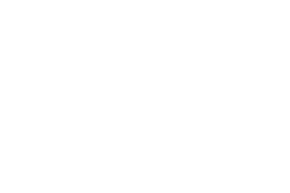
Your rainbow panorama
Olafur Eliasson, 2011 on top of ARoS, Arhus, Denmark; coloured foils safety glass
Photo: Fenestra Ateliers
|
|
COLOURING MATTER can be divided into:
* Dyes that are used in a bath (English: dyeing) and they dissolve fully in solvents on and after solution where no residue is left behind. Water is usually used as a solvent and as the dye is dissolved, it is called paint bath to colour textiles or leather. Dyes are suitable for absorbent materials such as textiles, paper, hair and leather and the particles are so small that they can easily settle into the fibres. Sometimes they need to be fixed by means of, for example, soda, salt or heat, so they are durable. Dyes are transparent and have no opacity, in contrast to paint and the colour of the material always has to be taken into consideration.
A soluble dye that is changed in an insoluble pigment is called a substrate pigment.
* Colloids contain colourants whose colour particles are larger than those of dyes but not big enough to be called pigments. They tend to absorb other substances, to thicken or congeal, and tend to ‘bleed’, rub off, migrate or spread, and they stain leak on surfaces easily. A colloid is formed by dispersing it as fine particles in a dispersing agent. For colouring pot glass melt, for example, gold (Ruby Red), silver (yellow) and copper (black and blue) are used.
-Sol is a colloid solution as in aerosols or aerosols with the suspension of ultra microscopic solid or liquid particles in a liquid, where the solution from the container is driven by air or gas.
* Pigments are used to paint (English: staining) and are the largest colour particles and they are not soluble. They have therefore always been used in a medium or dispersing agent needed to form a paint, paste or printing ink. Traditionally black pigments were made from soot and coal; for White pigments lead white and bone white, for Red pigments Cinnabar and lacquer; for Yellow pigments Orpiment and Massicot and for Blue Lapis Lazuli and Azurite. Pigments are too big to pass through a material to be included and must be restrained or secured on or in the material. If a pigment is created by the precipitation of a dye on a colourless inert substance, then it is called a basic component. Inorganic white powders are almost colourless if they are rubbed in oil and are used as paint pigments or as a filler to make textures with paint. Inert pigments include lime, clay and plaster.
-Certain pigments have certain effects such as reflecting of light such as in metallics and interference paints, while others can first store and later radiate light in the dark like black light colours and day glow colours and phosphorus paint. See below Optical qualities of glass. NB: Pigments in biology are smaller than colour pigments or colloids, and these biochromes ensure the colour of skin, hair or perhaps a petal.
|
|
|
|
|
|
|
GLASS COLORANTS
Much of the old glass got its colour from the natural contamination of the sand that was used for the melting. Soon it was discovered that drinks and foods in black, green and brown glass remained well preserved longer as the iron oxides in the glass protecting from light and so decay. Also the first spectacle glass was manufactured from green Forest glass (Dutch: Woudglas). Fern glass (Dutch:Varenglas) was an imitation of Venetian glass in which the potash of burnt ferns coloured the glass light yellow. If clear glass was required, then it was necessary to de-colour, and Glasmakerszeep or manganese oxide was added to the batch. NB: Theophilus called clear glass for the manufacture of stained glass 'white '. It was colourless and according to him not really transparent or "intangible" because it was practically opaque because of smears and bubbles. Really transparent, clear glass was "optically empty" and was then only used for tableware.
The modern glass gets its colour mainly through the effect of small amounts of oxides of modulated metals in solution, in colloid dispersions of insoluble particles or by adding previously coloured material. The composition of the mixture has a great influence on the colour. Thus a nickel oxide in soda glass gives a brown colour, but if the soda is replaced by potash, then the colour will be violet.
Colouring matter for glass is classified into two groups: the so-called Ion colouring and the Striking colours that mature to a different colour when fired as the former colouring arises by dissolving the ions of the metal oxides that give the glass its colour when cooled. The molecules in this glass type are dispersed into colloids divided into the glass mass where they form mix-crystals.
* Oxides are the colouring substances that consist of metal or metallic compounds, carbonates and salts in the colours of the glass mass. This form of colour or chromophores for pot metal stained glass are called Färbmitteln in German, and the result is Farbglas. They change into the glass, in the mass, the absorbed and reflected wavelengths and are in that sense no dyes or pigments. They are compounds of oxygen with a chemical element as the metal ions or monoxides of copper (black and blue), chrome (green), manganese (violet), cobalt (blue or green), titanium (violet), neodium (red-violet) iron (yellow-brown) and nickel (brown, yellow, green and blue to violet). At high concentrations of manganese, iron, nickel or cobalt oxides arises black glass.
Patina: originally the oxidation of copper which by weathering forms a green, protective skin and in general the skin that arose through the use, wear and aging of wood and other materials. When colouring of lead imitating weathering processes, the lead has to be treated with acids causing the surface colouring black, copper-coloured or bronze-coloured patina. Patinage is the imitation of patina as on plaster or other non-metallic material such as glass.
When colouring glass by working techniques one can use: glass paints as grisaille paints and contour paints that always -independently of their chemical compounds- are called oxides and are manufactured by burning or grinding or natural or synthetic metal oxides and minerals to be mixed with a flux (English: flux, German: Fluss) which has to burned on and into the glass surface. There are low burning and high burning glass paints and these paints can be painted thin or pasty/thick.
|
|

|

|

|
Colour stains: (German: Lazur, Buntbeitze, Glasbeitze, Dutch kleurbeitzen) are transparent, in the glass surface invaded paintings and they consist of colour resources and a staining substance to this colour matter -on the material-for which little affinity exists- to be able to bind. Colour stains consist of metal salts of pewter/tin, bismuth, copper, gold or platinum, manufactured by solution in an acid, added to a resin in order to obtain sediment. This sediment is dispersed into an oil that along with the resin will be burned during the firing and in the meantime also provides a reducing atmosphere (low oxygen) whereby the thin film in a certain colour precipitates on the glass. As with the emergence of colours in the originating techniques, with this staining by oxidizing burning, provide different colours than in a reducing burn. The inventor of this principle was Friedrich Egermann (1777-1866) from Schlukenau. Some stains are created with mixing with loam or clay to be used with cold working techniques after which the stain is burned. Reducing stains first arose in the 9th century under the Islamic ceramics and glass paints. Silver yellow developed in the 14th century by the glass painting techniques and is a stain where silver with sulfur was doused and finely powdered in a mortar with ochre. This powder was created with a solvent and painted on the glass. After burning in one had to remove the clay layer. Red stain as replacement of Ruby glass was invented by Friedrich Egermann Jr. and is a copper vitriol with ochre and has to precipitate in three different firings.
|
|
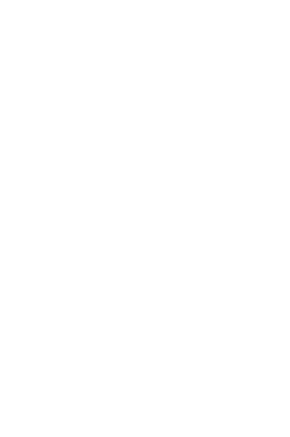
Sunny van Zijst: installation Midsummer Night's Dream, Biennale Kijkduin 2011; platina luster on handblown flat glass
Photo: Fenestra Ateliers
|
|
|
|
|

|

|

|
Granulates and powders (German: Krösel) are coloured glass pieces or flour that after heating of the hot object can be fused or blend in with the surface. In size the flours or powders measure of 0.2 mm to 2.7 mm or finer and granulates to 5.2 mm. Gallé called the technique marquetry technique and combined this with Patinage where he used beside granules also dust, chemicals, ash or minerals that were overlaid with a clear glass. NB: Frit is a fusible granulates and is processed as glass paste techniques Pâte-de-verre and kiln melting techniques.
Frit Tinting: Frit tinting creates color blends by adding colored glass powder to Clear frit. It broadens the palette immensely and makes it possible to achieve colors—red, yellow, orange—that are often difficult in casting.
Confetti are glass flakes, razor thin blown glass broken to shards. The transparent and opalescent colours are, because they are so thin, show after fusing very light of colour.
Stringers are glass-wires that are pulled from the molten glass mass for the manufacture of glass sheets. Even though they are manufactured from tested compatible glass, this quality of the stringers is not guaranteed. The thickness consists of 0.7 to 1.2 mm in diameter and exist in transparent and opaque colours. The stringers can be preprocessed in waves and bends for a burner and be processed into objects in the Filet-de-verre technique.
Glimmer: (German: Katzengold) is a mineral that are mother of pearl and mica-like, flexible flakes to be used with glass blowing and enclosed between flat glass.
Crinkle Ice: (German: Streueis or Malereis, Dutch: Strooi-ijs ) is blown into a hollow shaped container -such as a lampshade to make the glass opaque-. The inner wall is first foreseen of a gluing layer, after which the glass granules are infilled. After drying the granulates are fired and form a grainy, glass structure. On flat glass these granulates are strew in a medium and then burned.
|
|
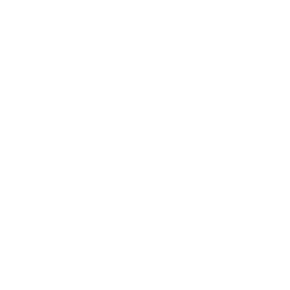
Katzengold
Photo: Fenestra Ateliers
|
|
|
|
|
|
|
PAINT MEDIUMS when drawing, painting, glass painting, reversed glass painting and between glass painting one makes use of:
*Binding agent: the technical name for all substances that attach pigments to the substrate and surfaces. They are means that have traditionally been used as adhesives as for the painting of a body, ceramic, wood or leather such as saliva, blood, egg, oil, pitch, fat, clay or ash and for other surfaces with binders as lime, water glass, skin glue (often mistranslated in wood (Dutch: hout) glue of the German Haut fore ‘skin’ that is made of rabbit pelt), gum Arabic, tragant, protein or casein or cheese-yellow, dust, paste, resins, balsams such as turpentine and oils such as linseed oil or beeswax. Composite binders are emulsions as driers, mediums or varnishes. At glass paints they incinerate. Water glass or liquid silicate is a concentrated solution of potassium or sodium silicate, that came solidifies by drying to a glassy mass but it is to the air not resistant. Water glass paint is paint with the binder water glass. Potassium waterglass was since 1825 used as binder for out-door wall paintings.
* Emulsion paint: a pasty paint that consists of a mixture of different liquids that normally would repel each other and not solve together. There are two types: OW-emulsions consisting of oil in the solvent water and WO-emulsions consisting of water and oil, for example turpentine. Egg yolk and quark were traditionally used in tempera emulsions.
* Fixative: a thin varnish with a low content of binder and makes, for example, a charcoal drawing smudge-proof.
* Gel (from the French word gelatin): a semi-solid substance that is elastic or jelly-like shaped by coagulation or clotting.
* Ground: a coating material that was used to create a surface for painting by preparing with one distinguishes primers as polymers, oil ground and under coat. A primer is the first coating on a surface that should be worked with paint or varnish.
* Ink: a liquid or pasty substance that contains colour resources that are add by a pen or brush with which one draws, paints, writes or prints such as India ink, Indian ink (to solve from pressed blocks), printing ink, spraying ink etc.
* Coatings: solutions of film-forming substances in volatile solvents with a high gloss and usually fast drying. Lacquers are originally submitted by the plaques of insects that fed on the Acacia trees in India and it was the raw material for shellac. Note: until the 18th century the word lacquer always gives red colour resources to such as Crimsonlak, rose Madder, Venetian or Indian lacquer. Now its means high-gloss lacquers, synthetic paints such as car paint, nail polish, etc.
* Medium: a colourless, non-pigmented substance that is added to paint fabrics and serves as a lubricant to the fluidity and plasticity, manipulate without the adhesion, binding-or film-forming properties to influence. All mediums used by stained glass painting incinerate after firing. Note: a medium (media) has also the meaning of the choice of tools, materials and techniques in which an artist expresses himself.
* Particle: a very small fragment -of any material-such as a pigment in a paint or colour particle.
* Paste: an ointment or pasty, malleable or plastic substance of such a consistency that it cannot flow. Some glass paints are created as a paste to obtain high-raised reliefs.
* Pastel: a colour chalk that is pressed from pigments and an adhesive agent and pastel colours are the light, whitish colour variants such as Lattimo glass. Also used as the crayons to colour with oxides for stained glass painting. With these crayons one could draw on the glass.
* Siccatives: a catalyst that promotes the drying of a substance and increases the speed of a chemical reaction. A retarder is a negative siccatives and slows down the speed of drying for ink or for instance in a two-component glue be able to process the glue longer.
* Toner: a pigment at full strength and the term is now often used for ink for copying and ink-jet devices.
* Diluent or thinner: a substance that can disperse other substances and is used in solutions as the liquid component of a solution such as water for salt, alcohol for resins and thinner for fats and is a medium that lowers the viscosity or increase the fluidity. When removing material it is called a solvent such as water, alcohol, white sprit, thinner, xylol, tri, methylated spirit and turpentine.
* Paint: a spreadable mass that often is applied in layers to materials and objects to provide a colour for protection, adornment, embellishment or indication. After drying it forms a cohesive layer that can be opaque, glazing or transparent, glossy or matte and can be made by different techniques such as painting, pouring, dipped, screen printing, and spraying. Mobility of the paint is the ease with which paint is running and the viscosity. The consistency of paint gives firmness or softness to: short paint is tough and is painted with hard brushes and spatulas while long let paint is smoothly and pulling out with soft brushes and tugs. The plasticity gives the ductility to. Transparency gives the ability to shine through and is across from the opacity that makes invisible by covering the surface. The glazing covering power is the covering and transparency of a layer of paint.
* Varnish is a non pigmented paint or lacquer used in coating of previously applied colour resources such as water paint to protect it from light, water stain, scratches etc. Mastic is the resin of a tree that grows in Mediterranean countries and that is on the market in the form of small yellow drops and is soluble in alcohol and turpentine and a varnish for oil painting is. NB: Mastic glue is also a kind of glue with addition of asphalt or tar and carbon for glass mosaic and Flemish for putty.
* Whitening agents or fillers or whitening agent extenders are needed to give consistence to paint by binder and substructure; are needed as inert pigment in respect of pigment lacquer, it's a extender medium for paint base or when needed to make "more". They have no opacity power and existence of traditionally from lime, plaster, clay and eggshells. Note: Fillers when editing a screen for silk-screening are liquid pastes that fill the mesh.
|
|
|
|
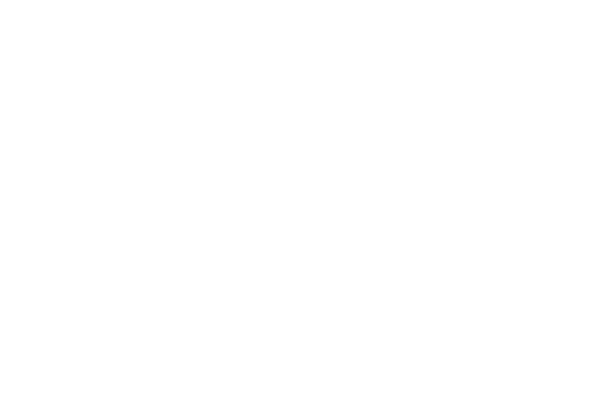
Ann Veronica Janssens
Zonder titel, 2008; Uraniumglas, oplage van 12, in opdracht van D&A Lab; 64 blokken van 12 x 12 x 20 cm
Tentoonstelling Anima Mundi, Glazenhuis, Lommel, 2009
[fotograaf] Kristof Vrancken & Z33, Hasselt (B)
|
|
|
|
|
|
|
COLOURED GLASS TYPES:
Until in the 18th century the melt was made of sand, soda, potash and lime, sometimes with additions of metal oxides. Today about 60 of the 90 on Earth common oxygen compounds or oxides used to build the vitricable mixture or mix (English: batch); the de-couleringsants or colouring ingredients as iron oxide, cobalt oxide, copper oxide and gold; flux as soda; stabilizers as lime, purification means to the glass to make homogeneous and intermediants as lead. See also the articles material> and Technique of Transparent>.
Names for the different in the mass or potmetal-coloured glass types used by the composition of the glass melting through the originating techniques are fabricated or arose by the still hot objects for the cooling via the originating techniques specially treat:
Striking colour glass: glass that changes colour by maturing or heating it again so that the colouring ingredient after cooling its final colour. This is caused by reheating and cooling or by changing the small particles in colloids that that will attach as large particles -the aggregation process -and thereby change the light absorption and so the colour in the glass mass as with Ruby glass and Amberina. Reactive glass is a type of glass introduced by Louis Comfort Tiffany and it changes colour when it is heated again. Cassius or Purple Crimson contain colloid of Gold and Tin chloride.
NB: Gradient colours are colour changes in an object or sheet where colours merge from the one to the other by dark to light or colourtone overflowing.
Agate glass (Italian: chalcedony or agate, calcedonio, German: Achatglas): opal glass marbled with brown, blue, green and yellow marbling as imitation of semi-precious stones. Originally manufactured in Venice in the late 15th century, with a revival in the 19th century. In the 17th century was a wax seal red glass type manufactured in Bohemia.
Alabaster Glass: a type of translucent or opal grey/white glass that was developed in Bohemia in the Biedermeier period. Iridescent Alabaster Glass was manufactured by Frederick Carder at Steuben.
Amberina: an amber coloured glass that in 1883 was patented by Joseph Locke of the glass factory New England Glass Co., Cambridge, USA and the glass that contained some gold and was after heating ruby red.
Ambetti: antique translucent glass metal by adding metal dots.
Anna yellow and Green: transparent yellow and green glass type with a strong yellow and green fluorescence which arose by the addition of uranium to the mixed. The glass was introduced in 1840 by Josef Riedel in Bohemia naming the glass to his wife Anna. Now made of controlled uranium oxide. Note: not to be confused with the Kuglerglas with that name that has that colour but is not fluoresces. Vaseline glass is the colour that looks like vasa line and is the white variant of uranium glass. Often used as flashing over green.
Art Glass: an American collective name for ornaments glass, opalescent, which usually was manufactured by Tiffany and John LaFarge and used in their windows. Fravrile is a name for hand rolled and mouth-blown Tiffany glass types, often with an iridescent surface that looks like ancient Roman glass. American is a red, blue, yellow and green flat glass that is mixed with white, coloured, transparent mass from opal cloudy mixture. Mottled glass is spotted as turtle; Streaky glass is clear or coloured glass opalescent glass on grading or gradually striking in variegated colours; Fracture, streamers or Mardi Gras are wafer-thin sheets of glass with chipped at the surface and/or glass threads; Drapery is hand rolled glass with heavy folds; Colourescent glass is clear, tinted glass with all kinds of different structures and textures and Seedy is brightly coloured glass with very small bubbles or seeds in the mass.
Aurene glass: developed by Frederick Carder. Aurene glass is a type in which in the glass sheet has got a metallic surface through the application to the still hot object in a drum with spraying metal salts on the hot glass. See for iridize the Article> Optical qualities of glass.
Aventurine: a semi-opaque glass with glittery containment of aventurine quartz. Gold flakes were used in the 15th century in Venice and in South Germany Katzengold and glimmer by mica flakes and after the 17th century copper.
Dichromatic glass: a glass kind that shows different colours by polarization if transmitted or striking light when viewed under different angles and it is made by adding neodymium oxide in the glass mass and gold, silver and later also aluminium and copper oxide in a reduced atmosphere. Frank Lloyd Wright made a lot of use of coloured in the mass dichromatic flat glass: in his stained-glass panels from the outside seen, the glass seems (incident light) blue and when one looks from the inside out (transmitted light) then the glass seems yellow. The Lucurgus Cup is a fine example with a red colour when transmitted light and a green colour when incident light. Alexandrit is a type of glass that is manufactured by addition of alexandrite. Shift colour patties or glass chunks for melting in the furnace for the colours yellow and green by the thickness of the glass see a red glow. NB: the Dichroic Glass types show different colours by operations arise if the angle of perception changes. See Optical qualities of glass>. Wikipedia says: One dichroic material is a modern composite non-translucent glass that is produced by stacking layers of glass and micro-layers of metals or oxides which give the glass shifting colours depending on the angle of view, causing an array of colours to be displayed as an example of thin-film optics. The resulting glass is used for decorative purposes such as stained glass, jewelry and such, and although bearing the commercial title of "dichroic" can also display three or more colours (trichroic or pleochroic) and even iridescence in some cases. The term dichroic is used more precisely when labelling interference filters for laboratory use.
Hyalith: opaque black and sometimes opaque red or Rotweisches glass as imitation of Wedgwood that was manufactured in Bohemia glass factory from 1817 by Count von Buquoy. Objects were often later decorated with gold luster.
Graniver: in 1924 invented by Royal Leerdam and it looks like stone in several colours and the extra addition of sand. The glass was used for dinnerware but was too porous and it turned out to be more suitable for the manufacture of glass mosaic.
Kugler colour bars: were for use for overlaying of blown glass manufactured by Klaus Kugler from Augsburg, Germany and the product is now manufactured by several glass factories. In German a piece of a rod of glass is called a Zapf and this overlaying technique Zapfenüberfang.
Lithyalin: a glass type which was invented by Fredrich Egermann that usually imitates in red, yellow and blue colours semi precious stone and after grinding in planes showed the typical marble drawing. In Germany it is called Stein glass.
Lattimo or milk glass (German: Bein glass, Knochenglas): glass in the mass white coloured by the addition of calcined bones. Now it is also manufactured by addition of tin oxide. Opaline stands for coloured transparent under layered Milk glass. See also chapter Optical qualities of glass>.
Ruby glass (German: Rubinglas or Goldrubinglas): glass that is coloured by the addition of copper, gold or selenium. Kunckelrood was obtained by the addition of gold chloride, the inventor was Johann Kunckel, 1679.
Selenium glass: light opaque and with blown hollow glass it changes-as opposed to flat glass- it changes at different light raids of hue. Chemical elements such as selenium, a non-metallic element that appears on sulphur, are glass builders who, together with sulphur can be used for making cadmium yellow, orange and red glass sorts.
Verre-de-Jade: a jade-green glass type that was used by Émile Gallé. At high firing of flash glass types the glass is often mat.
|
|
|
|
Venetian glass techniques:
Aborigeno: a technique for glass colouring by oxides between two glass layers and it gets the final colour by heat.
Argentato: is made by imposing silver leaf on the hot post and blowing the glass out. The silver tears to a crackle-structure. Brought up on the surface to opaline the colour changes to amber.
Aurato: the same technique as that silvering. When strongly blown out the glass is called Pruzzato.
Calcedonia: see Agate glass.
Crepuscolo: a containment of steel wool which burns by heating the metal and the glass discolours brown.
Eldorado: caused by the melting of transparent glass splinters, coloured glass Zanfirico fragments and coloured glass pieces. The bottom layer consists of Aventurina.
Eugeneo: a striking glass type.
Gemmata: a colour effect caused by covering the object with a thick layer of oxides that give the glass a certain colour. The layer tears when blown out to crackle, an optical effect.
Incaminciato: a glass type in which a white opaline is overlaid by a transparent coloured glass layer.
Laguna: the reverse application of Incarminiciato as the coloured opaline layer is applied. After heating it shows its final colour.
Onice: a striking glass that gets its colour by oxides and the glass looks like onyx.
Oriente: was manufactured around 1947 by Dino Martens with a combination of glass paint and glass shards.
Pasta vitrea opaca: mixing layers transparent and opal glass by heating and mixing, often with a gold layer.
Pulegoso: a kind of glass that is caused by deliberate pollution of the glass mass in the melting pot by adding for example petroleum. The bubbles that arise are opened to the glass surface.
Rugiadoso: on the inside of the object as a rough coating is applied by half molten glass splinters.
Scavoa: (Italian for excavated) the surface is rough by the cover-up with a mixture of colour powders and sand.
Valeto: a glass type consisting of multilayered opal glass types, of which the outer layer is transparent with embedded gold.
Vulcano: opal glass that is manufactured with glass paint and the chemical reactions during the burn, and also in a glass type on which half molten glass particles to the glass surface remained rough.
Forest glass (German: Waldglas, French: Verre de fougère): glass that uses the pollution of the sand making greenish, yellow or brown coloured glass.
Correction: Christine Andersen, DK
|
|
|
|
|
|
|


